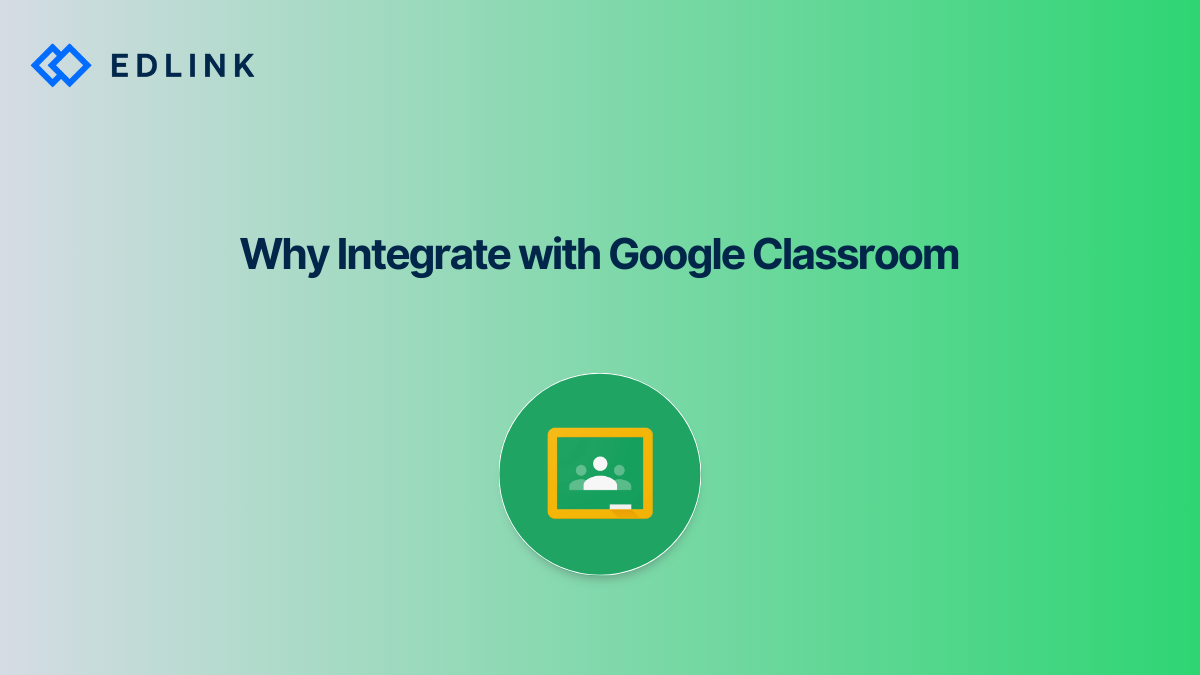At Edlink, we see more and more schools and teachers looking for Google Classroom and G Suite for Education integration. Companies that offer Google Classroom integrations can take advantage of this growing need. While it can be tricky, integrating with Google Classroom is worth it to both your company and your clients.
The Spread of Google Classroom
Google Classroom is one of the most widely used LMS's in the United States. Over 80 million teachers and students use G Suite for Education and over 40 million use Google Classroom. Since both G Suite for Education and Google Classroom are free to use, there is a very low cost of entry for new users. Many districts have also adopted Chromebooks for their classrooms, with over 25 million students using one at their school.
Google's educational ecosystem is also buoyed with hundreds of third-party applications that integrate with the G Suite for Education and Google Classroom API. These integrations leverage features such as single sign-on and assignment creation within Google Classroom. The API gives developers several methods to integrate their content and applications with the Classroom LMS.
Teachers Want More Google Classroom Integration
Our team has received several inquires about Google Classroom integration. School administrators and teachers are asking publishers and content creators to integrate their products with Google Classroom. In fact, many schools may have a specific LMS that they've adopted, yet allow individual teachers to use Google Classroom at their discretion.
However, both school admins and developers are often uncertain as to what integration in Google Classroom even means. Since Google Classroom is quite different from other learning management systems (LMS's) our team frequently hears the question, "Is Google Classroom an LMS?" While Google Classroom does offer features such as assignment creation and basic grade reporting, it does not support integrations with some widespread standards that other LMS's do support, such as the Learning Tools Interoperability® (LTI®) standard. Hence, many users and developers are confused as to what it means to integrate with Google Classroom.
Knowing how Google Classroom integration works and having an integration for your application can put you ahead of the competition. Having your application ready to onboard new Google Classroom users with integrated functions, such as single sign-on, assignment creation, and grade passback enabled, can help you win deals with schools and teachers who use Google Classroom. The user base of the Google for Education ecosystem continues to grow year after year, meaning that offering Google Classroom integrations will continue to be important in the edtech space.
The Challenges of Integrating with Google Classroom
While integrating with Google Classroom is certainly important, it does its challenges. For example, Google Classroom does not support the LTI standard. You must use the G Suite and Google Classroom API's in order to integrate. Furthermore, Google Classroom does not support full rostering, which can prevent your application from pre-provisioning accounts for teachers and students. This will impact how you onboard clients and potentially make the process more difficult. Additionally, there are considerations about actually writing the integration, as an in-depth knowledge of the G Suite API is necessary.
Read More on Google Classroom
Here are other articles we’ve written on Google Classroom and Microsoft Teams to help you on your integration journey:
- How to Implement SSO for Google Classroom
- How to Whitelist an Application in Google
- Should I Integrate with Schoology or Google Classroom
- What Information is Available Through the Google Classroom API?
- How Your App Can Sync Assignments and Grades with Google Classroom
Want to Learn More about Edlink?
If you're looking for a partner who can help guide you through developing LMS integrations (like these), then let’s introduce ourselves. We’re Edlink!

